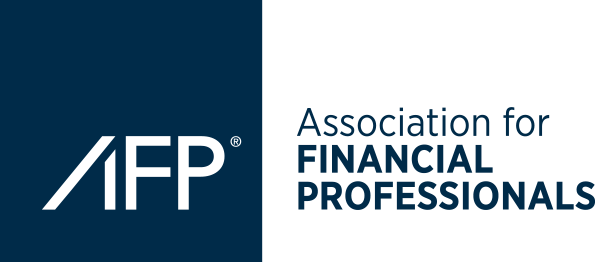Articles
Building an FP&A Function: Instilling Financial Accountability Through Processes at a Newly Public Company
- By Bryan Lapidus, FPAC
- Published: 8/5/2025

In 2016, Saudi Aramco initiated one of the most significant financial transformations in history — transitioning from a state-controlled entity to a publicly traded company. This shift required extensive changes in financial transparency, corporate governance and investor accountability. The financial planning and analysis (FP&A) function played a critical role in ensuring a smooth transition, aligning internal processes with the expectations of global investors.
The AFP FP&A Case Study series is designed to help you build up key FP&A capabilities and skills by sharing examples of how leading practitioners have tackled challenges in their work and the lessons learned.
Insight: For the company to move from a cost focus to an ROI and market focus, it needs an FP&A function that can hold management accountable.
| Company Size: | Large |
| Industry: | Natural resources |
| Geography: | Global |
| FP&A Maturity Model: | Mindset, Finance Processes |
Background
Many nations in the Gulf Cooperation Council (GCC), a regional, intergovernmental, political and economic union, are privatizing state-owned enterprises as part of a broader economic strategy to diversify their economies, ensure fiscal sustainability and attract foreign investment. For instance, Saudi Arabia's Vision 2030 aims to reduce dependence on oil, focus on other economic sectors and foster innovation. As a result of these shifts, significant changes needed to be made at Aramco, the world's largest oil producer and energy company.
The presenter of this case study was recruited to work for Aramco in early 2017, during the initial stages of its IPO preparation, and was tasked with building and implementing a robust FP&A function.
Challenges
As part of the economic transition, the company was planning to IPO a percentage of its shares, which implied a radical change in how it operated. Transitioning from a state-owned entity to a publicly listed company required it to demonstrate robust financial performance, transparency and accountability to potential investors.
The company needed to move from a traditional cost control approach — where the focus was primarily on managing operating expenses and capital investments, as the government collected all revenues — to a comprehensive financial accountability model. This new model required full ownership by management of financial statements, including profit and loss, balance sheet and cash flow, to demonstrate profitability, cash flow management and return on investment to potential shareholders and the market.
The establishment of the FP&A function aimed to transition the company from a backward-looking reporter of expense variance to a forward-looking forecaster of ROI performance. This required significant changes in financial reporting, modeling and forecasting, as well as a cultural shift within the organization to prioritize financial transparency and accountability. This would be crucial to meet the expectations of public markets and investors, who demand precise and reliable financial data and projections.
Approach
The FP&A team had a mandate to change management’s mindset, but it knew that to do that, it would need to develop the infrastructure to deliver the supporting services.
Changing management’s mindset
The first step involved educating management at all levels about the importance of understanding and explaining financial performance. This included training on historical and forward-looking financials, as well as market expectations, which relied heavily on bringing in outside people with the experience to train the existing staff.
- Initial setup and vision: The vision for the FP&A team was established by experienced industry professionals and advisors who recognized the need for a robust FP&A function to support the IPO. The public markets forced a discipline and vision of the team: transition from a backward-looking reporter of expense variance to a public-market-ready forecaster of ROI performance.
- Investment in people: The company aggressively approached the market to hire experienced professionals from companies like Shell, BP, Total, Exxon and Chevron. The centralized FP&A department grew from 15 to 45 people, and additional staff were added within various lines of the business, including oil production, refining, marketing and chemicals.
- Training and familiarization: FP&A trained business leaders to understand and communicate expanded financial data, forecasts, estimates and scenarios. The company also hired experienced professionals from the industry for the Investor Relations division, where dry runs for earnings calls were conducted to prepare management for interactions with analysts and investors.
The team also focused on developing its key toolset
- Development of financial models: A major effort and team accomplishment was the development of a comprehensive financial model, developed with the help of sophisticated consulting firms. This model captured the complexity of the company, and included detailed inputs for production, refining, costs, dividends and other financial parameters. It was also important to establish the boundaries of the financial models and how they would interact with other teams and their equally sophisticated models.
- Implementation of automated solutions: An automated solution for consolidation was designed and implemented using SAP Business Planning and Consolidation (SAP BPC), which was customized to align with the financial accounting solution.
The change in mindset had to trickle down through the company’s processes; the table below summarizes how that happened and the role of FP&A.
| Aspect of Transformation | Government-Owned Mindset | Publicly Traded Mindset | Role of FP&A in the Shift |
|---|---|---|---|
| Stakeholder Priorities | Decisions influenced by government economic goals | Balancing national interests with shareholder expectations | Helped align financial planning with investor value creation |
| Budgeting & Profitability | Focused on cost control and resource allocation based on national priorities | Profit-driven, ensuring that investments maximize shareholder value | Developed financial models to optimize profitability and ROI |
| Capital Allocation & Investments | Focused on long-term national infrastructure projects | Prioritized high-return commercial investments | Redefined budgeting to focus on strategic capital efficiency |
| Operational Agility | Long-term stability with predictable government funding | Market agility required due to oil price volatility and investor expectations | Implemented real-time analytics for data-driven decisions |
| Risk Management | Government backing ensured financial stability | Exposure to global market risks and oil price fluctuations | Updated forecasts and developed scenarios to address market changes |
| Finance as a Business Partner | Finance’s role was to track costs and compare to budget | Forecast the value-add from business decisions | Quantify spend decisions; consider market factors and shareholder impact |
Outcome
The efforts to establish a functional FP&A department and educate management were effective. The company conducted its IPO, which was well-subscribed. The transparency and preparation enabled it to manage the challenges posed by the global pandemic and the fluctuations in the oil market. The FP&A team regularly updated scenarios and forecasts to address market changes, allowing management to understand the financial impact of variations in oil prices and other factors quickly.
The initial IPO in 2019 raised almost 30 billion USD for the sale of 1.5% in the company; this reflected 98% of the total IPO value in the GCC region (War, Money, Oil and the Shaping of Aramco's Giant Share Sale). The continued transparency and meeting a stable dividend yield of more than 6% to its shareholders in volatile times set up a successful second round in June 2024, bringing in another $11 billion, with more than 60% being allocated to foreign investors. This was a clear signal that the company's approach had provided trust and transparency to the international market.
Copyright © 2025 Association for Financial Professionals, Inc.
All rights reserved.

![Interpayments Logo UMB Bank Vert Full Color CMYK[2]](/images/default-source/article-images/interpayments-logo_png.png?sfvrsn=4213fb6b_1)

